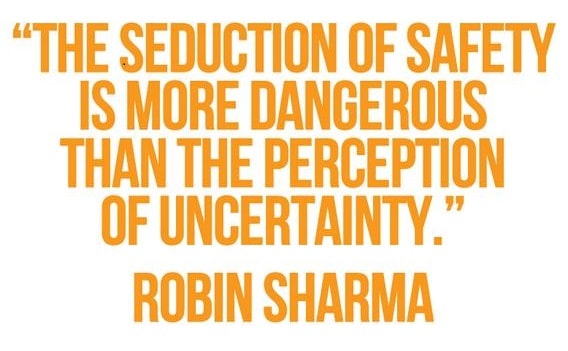Originally posted on February 21, 2017 @ 7:03 PM
The Seduction of the Safety Adjective

The trouble is, if you want to kill any enthusiasm for safety just throw in a safety minute/moment at the start of a meeting. Just ask anyone how easy it is to implement such an idea and then watch it develop into tokenism in quick time. Any idea like this (including crazy substitutes like zero harm) that seek to implement an identity, without a proper understanding of human judgment and decision making are doomed to fail. Without a social psychological framework for understanding, Safety will wonder why it has a bad name and bad taste in the mouths of workers. We have now reached a point where the excesses of safety in paperwork (https://vimeo.com/162034157), language (https://vimeo.com/165996392) and identity (https://vimeo.com/163648220) have created by-products and trade-offs in safety identity associated with the toxicity of skepticism and cynicism. Unfortunately, when someone signs off their email with ‘zero harm advisor’ it is nearly impossible to take them seriously.
An adjective is a word that defines something. The choice of a definition can both restrict or open up the context of what follows. The defining word does this through an unconscious and seductive technique. When we put an adjective before a word, who asks why the writer or speaker wanted to constrain the context with such an adjective? Similarly, the choice of an adjective hides the assumption of the writer or speaker and so often assumptions are hidden and unchallenged by dumb-down. In so doing, the writer or speaker validates the grammar of the context and so defines the way they want meaning to be organized. Its now reached the point where placing the adjective ‘safety’ in a sentence simply switches people off. Safety is now known for its excesses, the adjective ‘safety’ now seems to denote ‘kill-joy’, ‘dork’, ‘loser’, ‘crusader’ or all of the above. What a sad state of affairs.
Every time I am requested into an organization the first request is to reduce the excesses of safety. Then when I audit systems and paperwork I get astounded at the misalignment with the Act and Regulation and the unbelievable nonsense that has been mandated as essential to safety and risk. It is as if safety believes that weight validates effectiveness. On this logic a 15kgs safety management system (SMS) is more effective than a 5 kgs SMS.
I was recently at a mine site where we were able to reduce the volume of paperwork for the safety team by 50% in one day. We also reduced the induction by 50% and made it even more effective by transferring a large proportion of the induction to multi-media. Its not rocket science. Then with the time gained we were able to help safety people get back out on site with better human and communication skills to do what they should be doing – engaging people, helping people and supporting ownership in risk.
The other thing we help organisations do in our culture audits is to haul back the excesses of the safety adjective and safety artefacts. We help shift the discourse and artefacts of the business back to a balance where risk makes sense. Then it is amazing to witness the culture change so that risk and safety align back into balance with the rest of the business, not as some cancer that seeks to suck the life blood out of the organization and the nature of work. Unfortunately, the worship of safety and the excesses of safety create so much ‘sunk cost’ that you would think we were ripping out an organisational jugular vein. The same occurs when you suggest that the nonsense language of ‘zero harm’ should go. Just see how zero harm has become a religious artefact.
When you look at the language of some organisations you would think that they are running a safety business that builds buildings. I am sure this is what some tier 1’s and Federal Safety Commissioner (OFSC) think. The absurdity and excesses of Tier 1’s and OFSC audits is well known. The trouble is, creating a stake for more safety territory (that makes no difference to safety) has now become an art form in the safety industry. It self perpetuates without question and to question it is heresy in the life of the religion of safety.
The trouble is that any criticism of safety is framed by the industry as a negative, when in fact it is a positive. How can safety be effective or positive if 90% of your time is spent in front of a computer??? Just ask the people at the mine where we work, they are delighted with a 50% reduction in paperwork and inductions. I am sure the people at Lainge O’Rourke (https://vimeopro.com/laingorourkeaustralia/laing-orourke-safety/video/132670932) are also delighted to be not bogged down in the nonsense of zero harm (https://vimeopro.com/laingorourkeaustralia/laing-orourke-safety/video/132670933). So what can you do, where can you start?
Start with an audit of safety adjectives and get rid of some excesses. Bring some life back into safety by an emphasis on life not just the safety of life.



Do you have any thoughts? Please share them below